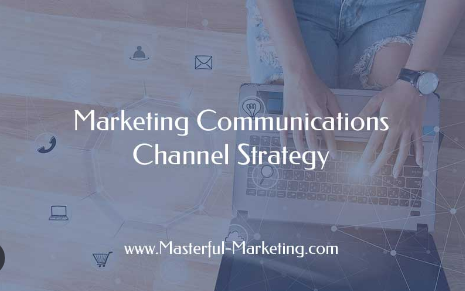Marketing communication channels are the mediums through which a company delivers its marketing messages to its audience. These can range from traditional print advertisements to modern digital platforms, and each has its unique advantages. The goal is to ensure that the message reaches the right people at the right time in a way that resonates with them.
Types of Marketing Communication Channels
1. Digital Channels
In today’s digital age, online communication has become one of the most important aspects of marketing. Some of the most popular digital marketing channels include:
- Email Marketing: One of the most direct and personalized channels. Businesses can send tailored messages to a targeted audience, providing product information, updates, or exclusive offers.
- Social Media: Platforms like Facebook, Instagram, Twitter, and LinkedIn allow businesses to engage with their audience in real-time. Social media is an excellent platform for sharing content, engaging in conversations, and building brand loyalty.
- Search Engine Marketing (SEM): SEM includes both organic (SEO) and paid search strategies (PPC) to boost visibility in search engine results pages. SEO focuses on optimizing content to rank higher organically, while PPC involves paying for ad placements.
- Content Marketing: By producing valuable content—blogs, videos, podcasts—businesses can establish authority in their niche. Content marketing not only educates the audience but also fosters trust.
2. Traditional Channels
Though digital channels dominate today, traditional marketing channels are still relevant and effective, particularly when targeting specific demographics or geographic areas. Some common traditional channels include:
- Television and Radio Advertising: These are mass media channels that have a wide reach, especially in specific regions or markets. While the costs can be high, the reach can justify the investment if it aligns with the target audience.
- Print Media: Newspapers, custom business cards, magazines, and brochures continue to be valuable for reaching certain audiences, especially older demographics who may prefer physical media over digital alternatives.
- Outdoor Advertising: Billboards, transit ads, and posters are great for grabbing attention in high-traffic areas. They are useful for brand visibility and can reach local audiences effectively.
3. Direct Communication Channels
Direct communication channels focus on building a personal connection with the audience. These include:
- Face-to-Face Communication: One of the oldest forms of communication, direct conversations between business representatives and customers can establish trust and foster long-lasting relationships. This could happen through sales calls, trade shows, or corporate events.
- Direct Mail: Sending physical mail to a targeted audience is still an effective method for some industries. Personalized direct mail pieces, such as catalogs or offers, can drive response rates and engagement.
The Importance of an Integrated Approach
Each marketing communication channel has its strengths, and the key to success lies in integrating these channels effectively. By using a combination of traditional and digital platforms, businesses can create a cohesive marketing strategy. For example, a television ad campaign can be complemented by social media efforts, and email newsletters can support an ongoing content marketing strategy.
Choosing the Right Channels for Your Business
With so many options available, it’s important to choose the right channels based on your business needs, target audience, and marketing goals. Here are some steps to guide your selection process:
- Understand Your Audience: Knowing where your audience spends their time is essential for deciding which channels to use. Younger audiences may be more active on social media, while older generations might prefer print media or television.
- Define Your Goals: Each channel may serve a different purpose. If brand awareness is your primary goal, mass media like TV and billboards may be suitable. However, if you’re aiming for conversions, more targeted channels like email marketing or PPC campaigns may be more effective.
- Budget Considerations: Digital channels like social media and email marketing are often more cost-effective than traditional channels like TV and radio. However, high-budget traditional campaigns can generate substantial results if done correctly.
- Track and Measure Results: Whichever channel you choose, it’s important to track performance and adjust strategies as needed. Tools like Google Analytics, social media insights, and CRM systems can help measure the effectiveness of your campaigns.
The Future of Marketing Communication Channels
As technology continues to evolve, new marketing communication channels will emerge, offering businesses more innovative ways to connect with their audience. For instance, the rise of influencer marketing is reshaping how brands interact with their audience. Influencers can act as trusted intermediaries, providing authenticity and reaching niche audiences.
Voice Search Marketing is another growing trend. As more consumers use devices like Amazon’s Alexa or Google Home, optimizing content for voice search is becoming a necessity for businesses to stay relevant.
Moreover, Artificial Intelligence (AI) is already transforming digital marketing. AI can analyze consumer behavior, predict trends, and even assist in personalizing marketing messages, ensuring that businesses can connect more effectively with their target market.
Conclusion
Marketing communication channels are diverse, and their effectiveness depends on how well they align with your business goals and audience preferences. By integrating both traditional and digital channels, businesses can create a robust marketing strategy that fosters engagement, builds brand awareness, and drives conversions. With the marketing landscape continually evolving, staying informed about emerging trends and technologies will ensure that your communication channels remain effective and relevant.







